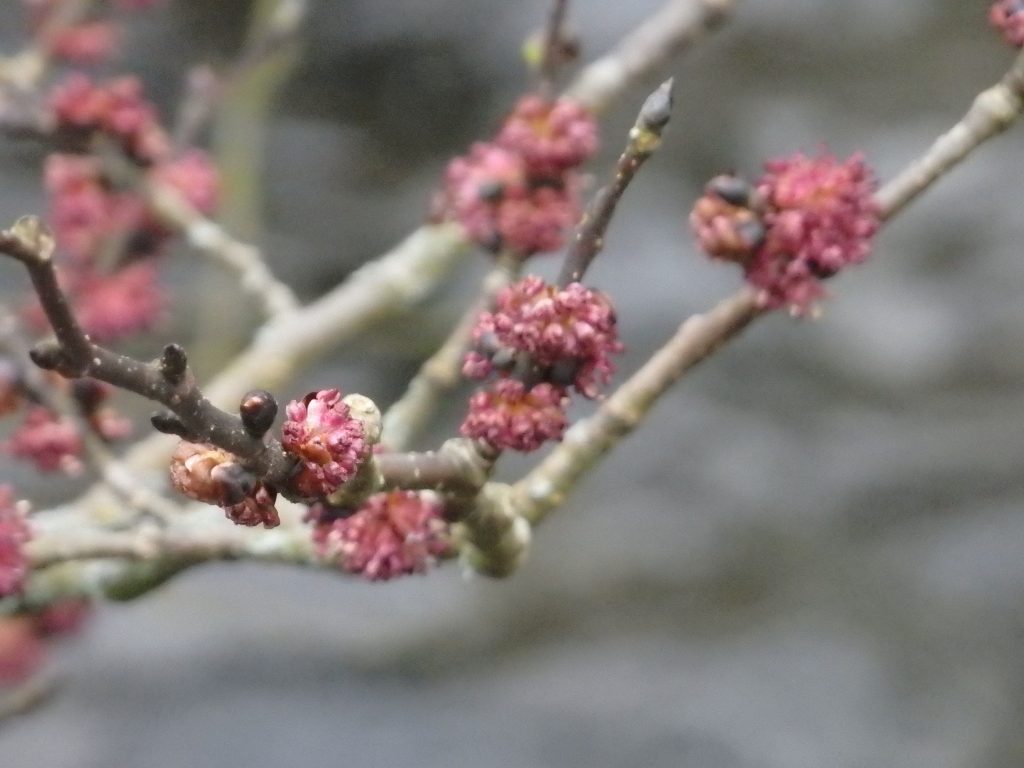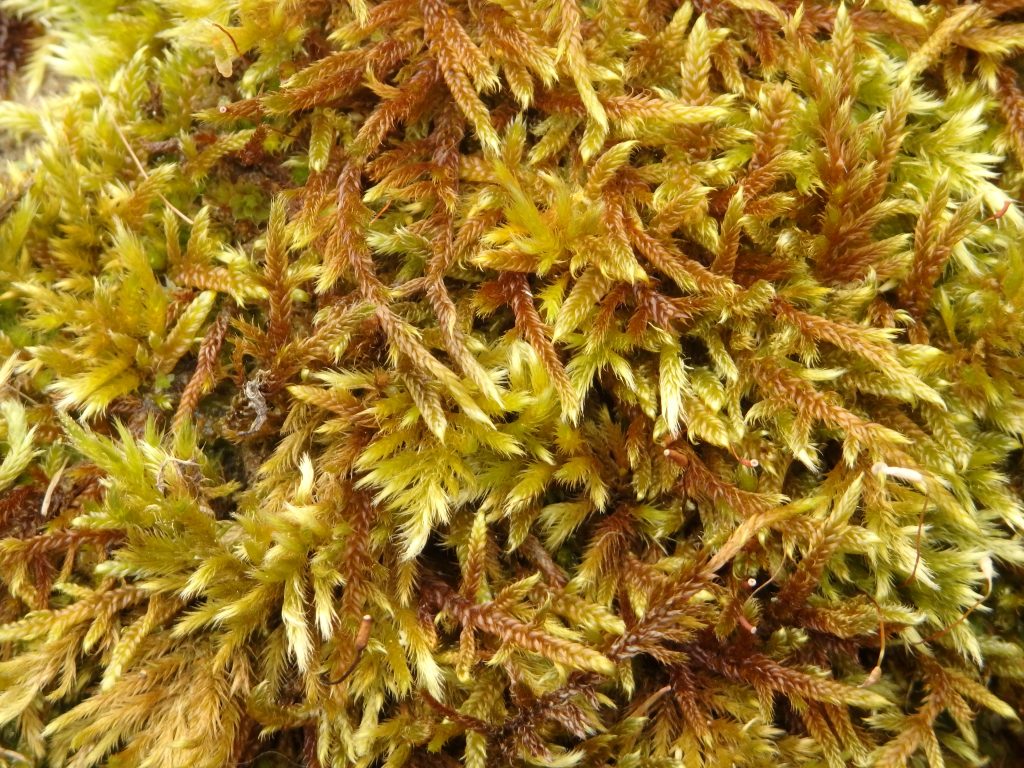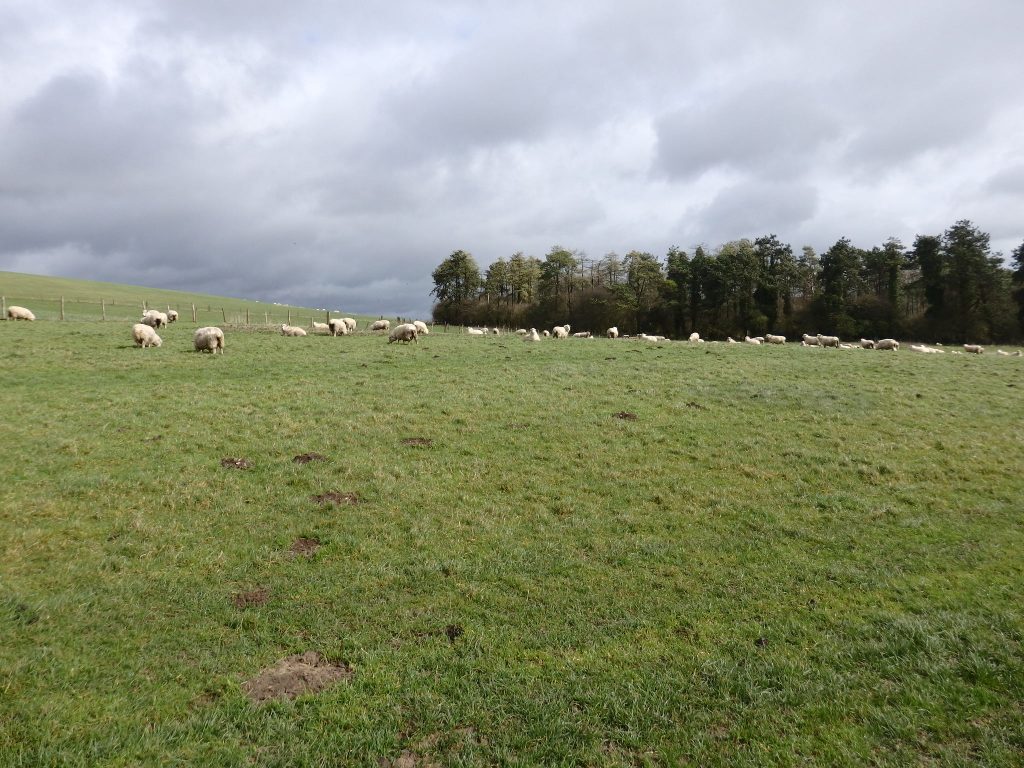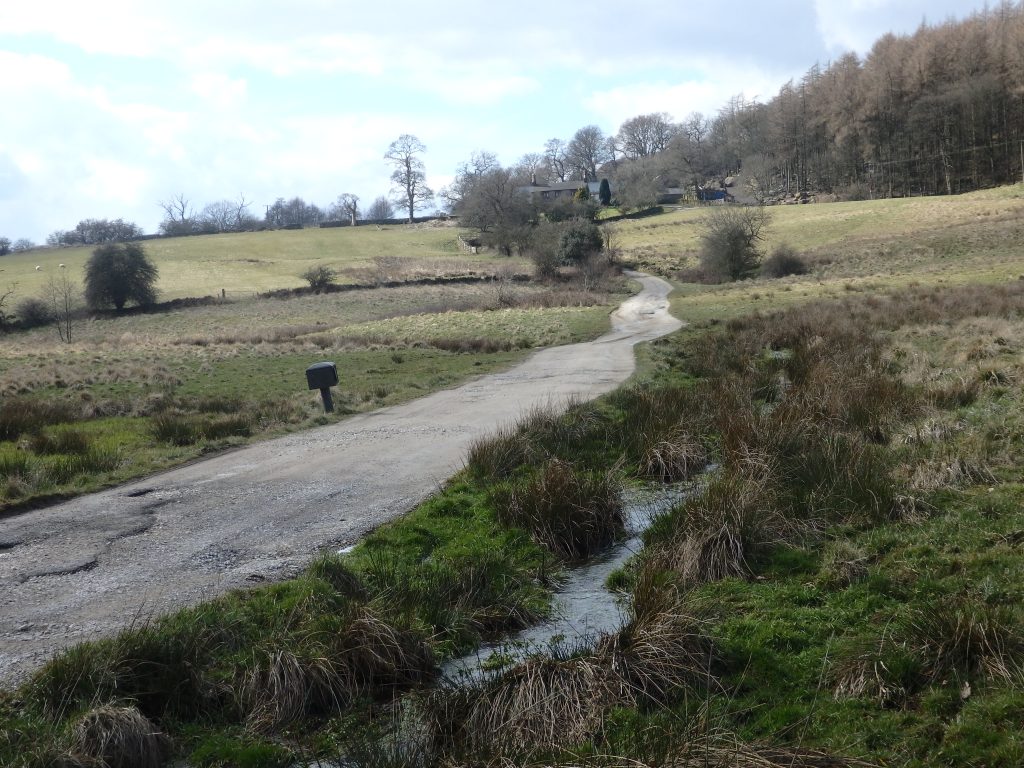What is seasonal in March? March feels like an awakening after the long months of winter.
It was one of those March days when the sun shines hot and the wind blows cold: when it is summer in the light, and winter in the shade.
Charles Dickens
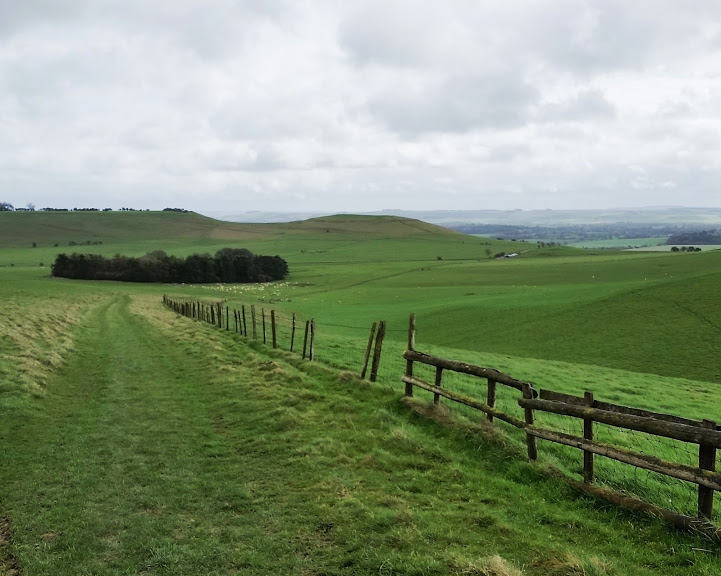
Whilst February teases at times with the promise of things to come, but March really gets on with business. Easter can sometimes fall in March, but not every year. Most notably March features the Equinox, where day and night are of equal length. This is not quite true, as the daylight is slightly longer, it’s sunrise to sunset that is of equal length.
Spring really gets down to business now, with leaves appearing on some trees, Daffodils out in bloom, Hares going about there business, gardens start receiving serious attention and farm life is very, very busy.
Dates, events, holidays and festivals.
Jump to....
March 2022
Seasonal, astronomical and nautical events
2nd March – New Moon
3rd – 4th March – Spring Tide
10th March – First Quarter
11th – 14th March – Neap Tide
18th March – Full Moon, Worm Moon
20th March – Spring Equinox
20th – 21st March – Highest Spring Tide
25th March – Third Quarter
26th – 28th March – Neap Tide
27th March – British Summer Time (Clocks go forward)
Festivals and events, religious, traditional and sporting
1st March – Shrove Tuesday / Pancake day
1st March – St. Davids Day
2nd March – Ash Wednesday & start of Lent
5th March – St. Pirans Day
5th March – World Pasty Championships
11th – 12th March – 6 Nations Rugby (Round 4)
15th – 18th March – Cheltenham Festival (Horse racing)
17th March – St. Patricks Day
19th March – 6 Nations Rugby (Round 5)
19th March – The FA Cup Quarter Final
25th March – The Tichborne Dole
26th March – Welsh Beekeepers Association Convention
27th March- Mothering Sunday
Find more events and notable dates throughout the year
March seasonal foods
What foods are seasonal in March.
Greens and leaves: Brussels sprouts, cabbage, cauliflower, pak choi, chicory, purple sprouting broccoli, nettles, Watercress.
Roots and other veg: celeriac, parsnip, swede, leek, onion, maincrop potatoes, Jerusalem artichoke.
Meat: Beef, Chicken, Spring Lamb.
Fruits: Bramley apple, rhubarb (forced), stored apples.
Seafood: Cod (Line Caught), Halibut, Salmon, Mussels, Oyster.
Exotics: orange, pomegranate.
Find out more about seasonal foods throughout the year with a guide to Seasonal foods.
In nature
Many early plants now growing. Some Leaves on trees.
Numberous animals come out of hibernation.
March is the serious start to the Bird Breeding Season. By the end of March you may see the first fledgling Blackbirds: although this depends on the weather – later if it has been cold and further north. Many other garden birds have a similar pattern, and there is a lot of activity with Sparrows, Tits, finches and other common garden birds.
Extra food can be a bonus to the birds: ensure whole nuts are only in mesh feeders. Whilst this food is not often useful to the chicks, it is very useful to the adults for their energy. Similarly, a good water supply, regularly cleaned is also very useful not just for drinking, but for a nice bath after a hard day foraging for food.
Look out for early butterflies, the Brimstone, Comma and Peacock, plus maybe large yellows.
Young rabbits might be seen, Hares out in fields patrolling their territories.
Celandine, Primrose, Wood Anemones, Dandelion, Marsh Marigold are all in flower and very important to Bee’s.
On the farm in March
Sheep are sorted into lambing groups (according to the number of lambs expected) and the feeding of concentrates begins. Lambing begins – a 24-hour operation. Breeding ewes vaccinated. Ewes feet trimmed against footrot.
Calving gets underway.
Muck spreading continues.
Fertilise and spray crops including Liquid fertiliser applied to potato fields. Top dress cereals.
Sowing Sugar Beet.
Find out more about what is happening in the Year on the farm
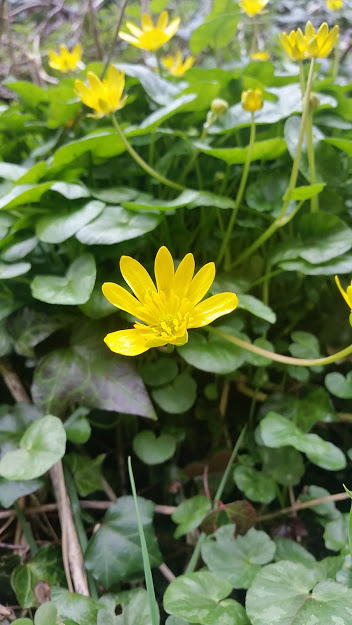
Things to do in March
In the March garden
Gardening hints
This might sound horrific to an old-fashioned gardener or allotment holder, but if you have Dandelions – let them flower! They are very important to Bees as an early feed of nectar. Similarly, Dead Nettle can provide a much-needed feed. The bees will reward you later by returning to pollinate your crops, especially important if you grow fruit or beans – get one over your neighbor by having beans that set. To be really fancy you could deadhead the dandelions – this will stop the seeds and encourage more flowers. Needless to say, after the first flush of flowers, you may want to remove them (especially if you are planting crops).
Out and about
March is the month when spring really gets into gear. March can be cold and stormy, yet can surprise with days that make you think of T-shirts and shorts and trying to locate the garden furniture at the back of the shed. This is because of the equinox it is a month of great change, the earth is waking up.
All the plants and animals are coming alive and starting the serious business of the year.
Look out for continued nest building. Garden birds with beaks full of materials, it is also the time of first broods, so you are just as likely to see worms and grubs being transported to hungry mouths.
Many trees and shrubs now putting on the first flush of leaves and others putting on an early blossom. Forsythia and daffodils provide bright yellows in parks and gardens. Wallflowers scent the air and primroses carpet shadier spots. However, for me, foliage is the crowing splendor of a sunny March day because it changes the smell of the air. Go and sniff, you may notice you can actually smell the plants growing, a faint herby waft on the air.
Also, see the Out and about Blogs
Days and nights draw even.

Recipe of the month.
Crispy, juicy, melty Pork & Roots.
An unashamed crowd-pleaser. I think everyone loves crackling, even if it worries their teeth, and lovely tender pork that can be pulled is good comfort food – and it is possible to have both!
Start hot, and reduce the temperature. There is not much cooking here, but plenty of time needed, so may require planning.
I recommend good pork, always. Not just for the welfare of the animal, but the environment and the flavour. It is more expensive, just eat meat less often. Make it count.
Ingredients
Pork – cooking times.
If unsure, the following is a good rule of thumb:
@175C (170c Fan) 25 mins /Pound + 20 minutes. 35 mins /kg +20 minutes.
3 – 4 kg (6 – 9 lb) of really good pork: Get the best you can, it will repay. Plenty of fat – if you are dieting, it matters not, as is will run away. If you do not have the money for a free-range, certified, organic joint, do not panic, you are cooking, not buying ready made, so you are already in a better place.
Some Salt.
Equipment.
A bigish roasting tin. If the joint fits in the tin and the oven, that’s all you need.
Kitchen roll can be useful.
A large cup or mug you don’t use too often.
Preparation
Get it out the fridge. Weight it, note it, or read the label with the weight on it.
Give it a rinse, Dry it using a kitchen towel, or tea towel (straight to the wash)
Rub liberally with salt. Ensure it is well scored – if you have a butcher, ensure that they score it, if not, do it yourself with a sharp knife. If this is not possible, don’t panic. Ideally, the pieces should be the size of the perfect scratching or crackling.
Leave for at least an hour, or maybe two or more if its big (over 6kg / 9lb) at room temperature. You may cover with something to keep of flies or domestic animals.
Cooking
Place into the hottest oven that your oven can supply for 20 – 30 minutes. You want to almost incinerate the outer of the pork without burning it, so you may need eyes on your oven. If it starts to char, you may need to take action. if not, leave it longer.
If you are in a hurry, about 180 for 35 mins per Kg or 25 mins per pound per will work. Better still, if you have the time, try the oven at 130 for 8 Hours for 3 kG to 12 hours for 6kg – you can even go to 120 for 18 – 24 hours for a larger joint. Baste when you remember, it is not needed, but will produce a better crackling and a more flavoursome joint.
Resting
Rest. Let it be for as long as possible. A minimum of 30 minutes, and even up to a couple of hours.
Ideally, leaving it longer is great. If it is nice and crsipy, you may like to remove the crackling and place back into a warm oven: if it is not crispy, pop it into a hot over to try to crisp it more. Cover the pork joint with foil and a tea towel.
A 3kg joint will keep its heat for an hour easily, and become more tender, tasty and succulent.
Dripping
Pour most of the juices from the pan into a vessel – a cheap mug will do fine, or an earthenware bowl. This is the finest dripping you will ever get. Whilst the older generation might advocate it on sandwhiches or toast, this is the best for roasting in the future, and fried eggs cooked in it are the best. Keep it for cooking, This is why my recipe does not have herbs, onions, other veg or cider in the roasting pan, it would spoil the taste of the amazing dripping.
Gravy
You could go the whole thing and make a proper gravy, but I cheat. Pop the pan on the hob and give it a bit of heat, nothing too much, just keep warm. Now you can introduce some cider, or maybe some wine – I would advise against Red wine and a definitely no to beer. Poke it about, get the bits of the bottom.
Take the cooking water from the greens, and make some cheat gravy (Bisto chicken granules work very nicely) and pour into the pan.
You can try to slice the pork, however, it may well just fall apart. It’s up to you, sliced, lumps, pulled…..
I think this goes very well with some carrots, (roast spuds if you are making them, or a bit of mash – potato or root), and lots of greens: depending on how the season is and your taste, Sprouts, Winter cabbage, Kale, Caleibrase or if lucky sprouting broccoli.
The cracking is at its best now, however, the rest of the meat can be kept in the fridge for 3-4 days.
For more inspiration see the Food Blogs
March Jobs in the vegetable garden or allotment
General Jobs
Rake seedbed ready for sowing
Dig runner bean and celery trench.
Feed overwintering crops and apply fertilisers ready for new crops.
Feed and mulch fruit bushes and trees. Plant Apple and pear trees, Blackberries, Cranberries, Gooseberries and currants, Grape vines, Raspberries, Strawberries.
Cease forcing rhubarb.
Divide herbs and other perennials.
Sowing and Planting
Indoors: Sow or plant -Aubergines, Brussels sprouts, Cabbages, Celeriac, Celery, Chillies and peppers, Cucumbers, Fennel, Globe artichokes, Kohl rabi, Lettuces, Sprouting broccoli, Sweet potatoes, Tomatoes.
Outdoors under cover: sow – Beetroot, Carrots, Cucumbers, Lettuces, Oriental leaves, Radishes, Rocket, Salad leaves, Turnips.
Outdoors: Sow – Broad beans, Cabbages, Calabrese, Leeks, Lettuces, Onions, Parsnips, Peas, Spinach, Spring onions, Sprouting broccoli.
Plant: Asparagus, Broad beans, Cauliflower, Garlic, Jerusalem artichokes, Onion sets, Peas, Potatoes, Rhubarb, Shallots, Spinach.
Harvest
Brussels sprouts, Cabbages, Cauliflowers, Celeriac, Chicory, Endive, Kale, Leeks, Lettuces, Parsnips, Rhubarb, Spring onions, Sprouting broccoli, Swiss chard.
Find out more about what is happening in the allotment or vegetable garden

Activities, things to see and do in March
With lengthening days arise more opportunities to get out and about. To see what is happening in nature and the countryside. There is also a lot more to see as the year really starts to get going.
Thinking about getting out and about, then perhaps Buy OS Landranger maps direct from Ordnance Survey to discover new places or see the latest handheld GPS devices with bundled mapping from Ordnance Survey.



